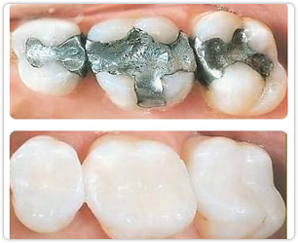Dental Fillings and Restoration
What is Filling/Restoration?

A dental restoration or dental filling is a dental restorative material used to restore the function, integrity and morphology of missing tooth structure. The structural loss typically results from caries or external trauma. It is also lost intentionally during tooth preparation to improve the aesthetics or the physical integrity of the intended restorative material. Dental restoration also refers to the replacement of missing tooth structure that is supported by dental implants.
For Example :-
To treat a cavity your dentist will remove the decayed portion of the tooth and then "fill" the area on the tooth where the decayed material was removed. Fillings are also used to repair cracked or broken teeth and teeth that have been worn down.
Types of Dental Restorations:-
- Direct Restorations
- Indirect Restorations
Direct Restorations :- (Fillings)
Direct restorations involves placing a soft filling into the prepared tooth and building up the tooth before the material sets hard. The advantage of direct restorations is that they usually set quickly and can be placed in a single procedure.
Indirect Restorations :- (Crowns,Bridges,Veneers)
Indirect fillings are similar to composite or tooth-colored fillings except they are made in a dental laboratory and require two visits before being placed. Indirect fillings are considered when not enough tooth structure remains to support a filling.
In this technique the restoration is fabricated outside of the mouth using the dental impressions of the prepared tooth. Common indirect restorations include inlays and onlays, crowns, bridges, and veneers.
The finished restoration is usually bonded permanently with a dental cement. It is often done in two separate visits to the dentist. Common indirect restorations are done using gold or ceramics.




